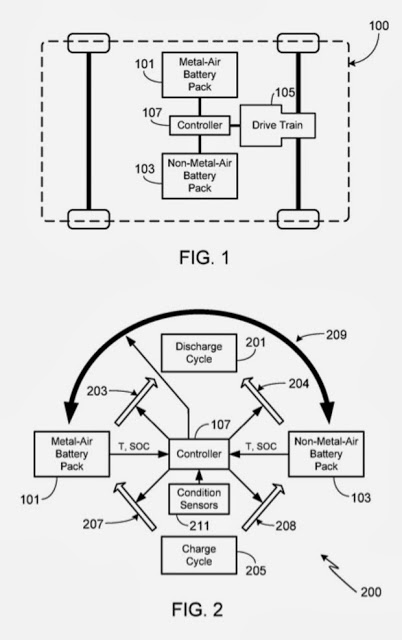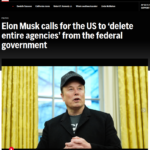Tesla Motors recently filed for a patent on a hybrid battery pack design that enables joining metal-air and lithium-ion battery cells into one battery pack, to implement a much larger total energy capacity and therefore a longer driving range. The idea is “just” a patent at this moment, and metal-air batteries aren’t available in automotive-quality cells yet, but it shows that Tesla is looking into the future. And, for that matter, I’m sure the other automakers are looking into similar ideas.
The point is to take advantage of the huge energy capacity gain benefits of the metal-air batteries. This is technologies like zinc-air, aluminum-air, magnesium-air, iron-air, lithium-air or
vanadium-air batteries, all of which have researchers attempting to develop batteries using those chemistries. In each case the “-air” part means that part of the battery construction uses oxygen from the atmosphere.
That’s a block diagram of the battery pack and the energy flows within the system.
The lithium-air portion of the battery pack is used to power the drive system, because lithium-ion is more capable of the power levels required to do so. Metal-air batteries, while they have high energy density do not support high charge/discharge rates. In this design the metal-air portion is used solely to keep the lithium-ion pack charged up.
For more details see the patent application![]() .
.
- Highway design could decrease death and injury risk, if “we” chose smarter designs - March 28, 2015
- GM really did trademark “range anxiety”, only later to abandon that mark - March 25, 2015
- US Government releases new regulations on hydraulic fracturing, that some call “toothless” - March 20, 2015
- Tesla Motors magic pill to solve range anxiety doesn’t quite instill range confidence - March 19, 2015
- Update on Galena IL oil train – 21 cars involved, which were the supposedly safer CP1232 design - March 7, 2015
- Another oil bomb train – why are they shipping crude oil by train? – Symptoms of fossil fuel addiction - March 6, 2015
- Chevron relinquishes fracking in Romania, as part of broader pull-out from Eastern European fracking operations - February 22, 2015
- Answer anti- electric car articles with truth and pride – truth outshines all distortions - February 19, 2015
- Apple taking big risk on developing a car? Please, Apple, don’t go there! - February 16, 2015
- Toyota, Nissan, Honda working on Japanese fuel cell infrastructure for Japanese government - February 12, 2015













